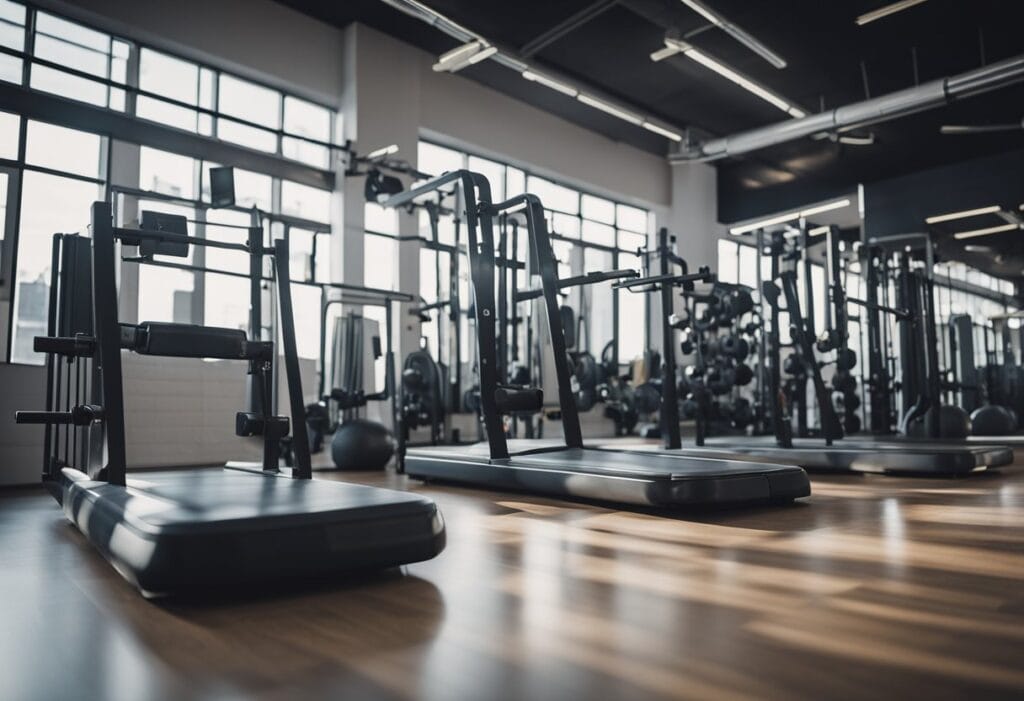Incorporating balance and stability training into your fitness routine can be a game changer when it comes to injury prevention. Whether you’re an athlete or a fitness enthusiast, taking the time to improve your balance and stability can help you avoid common injuries like ankle sprains, knee pain, and lower back strains. In this article, we’ll explore the fundamentals of balance and stability training, the importance of injury prevention, and how to design effective training programs that can help you stay injury-free.

Balance and stability are two key components of athletic performance that are often overlooked. However, they are essential for maintaining proper form and preventing injury. Balance training focuses on improving your ability to maintain your center of gravity over your base of support, while stability training focuses on improving your ability to control movement in different planes of motion. By incorporating both types of training into your workouts, you can improve your overall athleticism and reduce your risk of injury.
Injury prevention should be a top priority for anyone who is physically active. Common injuries like sprains, strains, and tears can be painful, time-consuming to recover from, and can even lead to long-term damage. By taking the time to incorporate balance and stability training into your workouts, you can reduce your risk of injury and keep yourself active and healthy for years to come.
Key Takeaways
- Incorporating balance and stability training into your fitness routine can help prevent common injuries.
- Balance training improves your ability to maintain your center of gravity, while stability training improves your ability to control movement in different planes of motion.
- Injury prevention should be a top priority for anyone who is physically active.
Fundamentals of Balance and Stability
Balance and stability are essential components of injury prevention in athletes. Incorporating balance and stability training into your workout routine can improve your overall athletic performance and reduce the risk of injury. In this section, we will explore the fundamentals of balance and stability training, including proprioception and neuromuscular control, as well as the role of core muscles in stability.
Understanding Proprioception and Neuromuscular Control
Proprioception is the ability to sense the position and movement of our body parts without relying on vision. It is an essential component of balance and stability, as it allows us to maintain our body’s position in space. Neuromuscular control refers to the coordinated activity of the nervous and muscular systems, which allows us to maintain balance and stability during movement.
To improve proprioception and neuromuscular control, athletes can incorporate balance exercises into their training routine. These exercises can include standing on one leg, performing single-leg squats, or using balance equipment such as wobble boards or stability balls. By challenging the body’s ability to maintain balance, these exercises can improve proprioception and neuromuscular control, reducing the risk of injury.
The Role of Core Muscles in Stability
Core muscles play a crucial role in maintaining stability during movement. The core muscles include the muscles of the abdomen, lower back, and hips. These muscles work together to stabilize the spine and pelvis, allowing for efficient movement of the arms and legs.
Incorporating core exercises into your training routine can improve your overall stability and reduce the risk of injury. Core exercises can include planks, side planks, bird dogs, and bridges. By strengthening the core muscles, athletes can improve their ability to maintain stability during movement, reducing the risk of injury.
In conclusion, incorporating balance and stability training into your workout routine can improve your overall athletic performance and reduce the risk of injury. By understanding the fundamentals of balance and stability, including proprioception and neuromuscular control, as well as the role of core muscles in stability, athletes can develop a well-rounded training program that supports their athletic goals.
Injury Risks and the Importance of Prevention
As athletes, we are constantly pushing our bodies to the limit. While this drive and determination is admirable, it can also come with a high risk of injury. Injuries can be caused by a variety of factors including overuse, improper technique, and inadequate training. That’s why it’s crucial to incorporate injury prevention strategies into our training routines.
Common Injuries in Athletes
Athletes are at risk for a wide range of injuries, but some are more common than others. According to a systematic review of balance training programs in athletes, the most common injuries in sports are ankle sprains, knee injuries, and shoulder injuries. These types of injuries can be caused by a variety of factors, including poor balance and stability.
Impact of Balance Training on Injury Risk
Balance training is an effective way to reduce the risk of injuries in athletes. According to a study on injury prevention, safe training techniques, rehabilitation, and return to play, standing exercises that incorporate single-leg balance on a rocker board in all three planes can improve balance and reduce the risk of injury. Additionally, core stability exercises can also help prevent injuries by restoring and enhancing core stability, which is related to musculoskeletal injury.
Incorporating balance and stability training into our workouts can help reduce the risk of injury and keep us performing at our best. By focusing on proper technique and incorporating injury prevention strategies, we can stay healthy and achieve our goals.
Designing Effective Training Programs

When it comes to injury prevention, designing an effective training program is key. A comprehensive training program should include a variety of components that work together to improve balance, stability, and overall fitness. In this section, we will discuss the components of a comprehensive training program and how to incorporate specificity and progression.
Components of a Comprehensive Training Program
A comprehensive training program should include the following components:
- Warm-up: A proper warm-up is essential to prepare the body for exercise and prevent injury. A good warm-up should include dynamic stretching, mobility exercises, and light aerobic activity.
- Strength Training: Strength training is an important component of any training program. It helps to improve muscle strength, endurance, and power. When designing a strength training program, it is important to consider the intensity, frequency, and duration of the exercises.
- Balance and Stability Training: Balance and stability training are essential for injury prevention. These exercises help to improve proprioception, which is the body’s ability to sense its position in space. Incorporating balance and stability exercises into your training program can help to improve overall balance and reduce the risk of injury.
- Flexibility Training: Flexibility training is important to maintain joint mobility and prevent muscle imbalances. Incorporating stretching exercises into your training program can help to improve flexibility and reduce the risk of injury.
Incorporating Specificity and Progression
When designing a training program, it is important to consider specificity and progression. Specificity refers to the idea that training should be tailored to the individual’s goals, needs, and abilities. For example, if you are training for a specific sport or activity, your training program should include exercises that mimic the movements and demands of that sport or activity.
Progression refers to the idea that training should gradually increase in intensity, frequency, and duration over time. This helps to prevent injury and improve overall fitness. When designing a training program, it is important to start with a baseline level of fitness and gradually increase the intensity and duration of the exercises.
Incorporating specificity and progression into your training program can help to improve overall fitness and reduce the risk of injury. By designing a comprehensive training program that includes warm-up, strength training, balance and stability training, and flexibility training, you can improve your overall fitness and reduce the risk of injury.
Balance and Stability Exercises

Incorporating balance and stability exercises into our workout routine is an effective way to prevent injuries and improve overall performance. These exercises help us develop better control over our body movements and enhance our ability to maintain balance in different positions.
Static and Dynamic Balance Techniques
Static balance techniques involve holding a position for a certain period of time while maintaining balance. Examples of static balance exercises include standing on one leg, heel-to-toe walk, and single-leg deadlifts. These exercises help improve our balance and stability by strengthening the muscles responsible for maintaining balance.
Dynamic balance techniques involve movements that require us to maintain balance while moving. Examples of dynamic balance exercises include lunges, squats, and step-ups. These exercises help us improve our balance and stability by challenging our ability to maintain balance while performing different movements.
Advanced Stability Exercises and Equipment
Plyometric exercises are advanced stability exercises that involve explosive movements. Examples of plyometric exercises include box jumps, jump squats, and single-leg hops. These exercises help us develop explosive power and improve our overall stability.
Unstable surfaces, such as wobble boards, are also effective tools for improving balance and stability. Using unstable surfaces during exercises challenges our ability to maintain balance and forces us to engage our core muscles to stabilize our body.
Incorporating balance and stability exercises into our workout routine can significantly reduce the risk of injuries and improve our overall performance. By gradually increasing the difficulty of these exercises and incorporating advanced stability equipment, we can continue to challenge ourselves and improve our balance and stability over time.
Assessing and Enhancing Athletic Performance

The Connection Between Stability Training and Performance
Stability training has been shown to have a positive impact on athletic performance. According to a systematic review published in PubMed, SportDiscus, and PEDro scale, balance training can improve balance, agility, and neuromuscular control, which are essential components of athletic performance. The review also found that balance training can reduce the risk of lower extremity injuries in athletes.
In sports such as soccer, basketball, volleyball, and football, where sudden changes in direction and jumping are common, balance and stability are crucial for success. Incorporating stability training into an athlete’s training regimen can lead to improvements in sport-specific performance, athleticism, and a decreased risk of injury.
Evaluating the Effectiveness of Balance Interventions
It is important to evaluate the effectiveness of balance interventions to ensure that they are achieving the desired results. One way to assess balance is through the use of balance tests such as the Y Balance Test or the Star Excursion Balance Test. These tests can help identify any imbalances or weaknesses that an athlete may have and allow for targeted interventions to improve balance and stability.
In addition to balance tests, performance metrics such as jump height, agility, and sprint times can be used to evaluate the effectiveness of stability training. By tracking these metrics over time, we can see if an athlete’s performance is improving and if the stability training is having the desired effect.
Overall, incorporating balance and stability training into an athlete’s training regimen can have a positive impact on athletic performance and reduce the risk of injury. By evaluating the effectiveness of balance interventions, we can ensure that we are providing athletes with the best possible training to help them reach their full potential.










